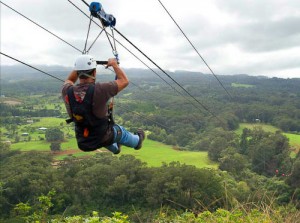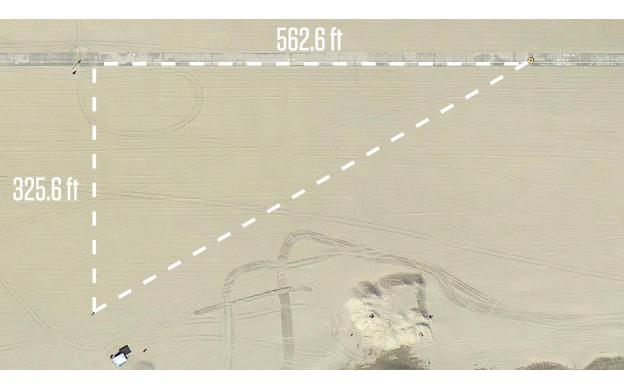Last week was the first week of a four-week summer academy. I teach a 110-minute class, four days a week, and it's designed as an enrichment course: no homework, no tests, no grades. The class is titled
Get Ready for Algebra and
here's the working schedule for the four weeks.
It's a great opportunity for me to practice some of my skills; skills I once possessed and skills I learned this past year, but didn't practice enough. Initially I thought I'd be keeping
some of my skills sharp, but I soon found out how rusty I am at various moves, ranging from facilitation, to instructional, to questioning. How do I know, I recorded three of the four days last week.
Before I break down an 8-minute video clip from the second day, I want to be clear:
1)
It's Open House everyday in my classroom. Anyone is welcome at anytime. I observed so many teachers this year and am extremely grateful for the opportunity. I learned a lot by being an observer. Being an observer allows me to reflect on my own practices,
not necessarily the person being observed.
2)
Recording my Open House classes allows me to identify certain skills and improve them.
These are
NOT self-fulfilling, self-righteous, self-absorbed, self-promoting attempts at my own teaching. If I am to encourage other teachers at video-recording their teaching in the name of professional development, I need to do it too.
3)
What professions record themselves (or other professionals) as a means to strengthen their craft? I recently tweeted some professions that benefit from recording their craft, ranging from athletes to musicians to dancers to doctors to comedians to teachers. You can only get better, right?
4)
I need to be vulnerable, humble, and open to improve. I intend to keep my video clips to segments shorter than 10 minutes. I picked a specific part of the class I wanted to focus on improving. Even if no one else sees your video, I hope you'll prop up a camera in your room and record 10-15 minutes of your class. Play it back and reflect. Go in the next day and make those changes (improvements) you want to make.
5)
One more time: These are NOT self-fulfilling, self-righteous, self-absorbed, self-promoting attempts at my teaching. Nor do I pretend to be perfect at this stuff. I just know I can be better and video recording helps immensely. If you have the stomach to continue, you'll see my notes as I reflect on my facilitation of this Estimation 180 challenge:
my wife's height.
1:45
I ask the class to share a "too low" for Mrs. Stadel's height.
I try to get the class' attention about writing down 4'10" and how it's confusing... because I know students typically write feet and inches using decimal notation (4.10).
Here's what I wish I did (or could have done):
If I had done a better job of checking student work while they're working, I would have known how the student wrote 4 feet 10 inches on her paper.
I wish I asked the student how to write 4 feet 10 inches on the whiteboard.
I could have had the student write it up on the board while all the students were working.
I should have asked her why 4'10" was a reasonable "too low".
Having her share her reasoning would strengthen her voice and mine at the same time.
2:10
I received 7'10" from another student for the "too low" and asked "Is that taller than me?"
Like the previous student, I should have asked her to share her reasoning.
2:20
"Did anyone put 6'4" as their 'too high'?"
I need to capitalize on why 6'4" would be an extremely reasonable "too high".
Five students raised their hand on camera and I remember about two others students (off camera) raised their hand as well.
I should have followed up with at least one of these
seven students as to why 6'4" makes sense here.
*
I usually do this... argh.
2:35
"Don't share with me, share with your neighbor. Share with your group."
Why did I not say, "I would also like you to explain your reasoning behind your answer."
This would have also bought me an extra minute to check in with at least one more student. When checking in with students, I typically have them rehearse on me so I can encourage them to share whole group in a few minutes.
3:15
I began to take four estimates.
"I'm totally forgetting something."
I forgot to introduce the idea of students filling out their number lines.
4:00
I like the idea of the class filling out the same number line together on the first estimation challenge.
4:20
I explain that it's a common student misconception to put their estimate right smack in the middle of the number line, even if it's wrong.
Instead of being abstract in my explanation, I could have been more concrete by showing them an example. Let's say a student thinks Mrs. Stadel is exactly 5 feet tall (5'0"), they would still put there answer right smack in the middle. I should have put 5'0" in the middle.
Ask students: What's wrong with this?
Ask students: How can we use this number line more accurately?
I was truly lucky to get a difference of three feet between 4'10" and 7'10".
I didn't explain my thinking to students: I knew it was three feet, but didn't explain that I knew that half of 3 feet is one and a half. I should have modeled my thinking for students.
4:55
"For time reasons, I'm going to help you out"... look at me, the clock watcher. Am I really helping students out? I feel more like I'm helping me out by bailing them out. For about a minute, it's me doing the math, not the students.
How silly of me, I could have simply marked 5'10" and 6'10" on my number line breaking the distance between 4'10" and 7'10" into thirds. And again, explain my thinking.
5:10
I'll start taking your guesses.
I like when I ask students to stop me when I get to their guess on the number line.
Should I take the average? or should I have students argue it out?
I think the latter.
Here's why:
that initial placeholder on the number line impacts EVERY estimate afterwards. Make it count.
6:10
I just got done taking four estimates and didn't ask for one single reason behind them...
I say, "A lot of good guesses here." because I already know the answer. I can see that the four estimates I took are in the ballpark. However, I never called on one of those four students to convince me.
6:15
I tried to dig myself out of this hole by saying, "I'm going to keep you guys in suspense."
I wouldn't say this is the best move. However, it was better than completely ignoring (or forgetting) the reasoning behind their estimates.
I went with two reasons. Half the number of guesses I received just a few minutes prior. BUMMER.
7:45
Once I revealed the answer, you can hear the "ohhs." because they were actually pretty close.
I say, "If you are within one or two inches, you should be really proud of yourself."
A student says, "Dude! I was off one inch!"
Same student, "I'm so happy!"
Maybe I missed it (or forgot by now), but a couple kids had a huge sigh of relief and were even excited about this. Seriously, that's awesome. If all we did was worry about our "answer" being exact every time, then we've lost focus on the process of estimating. Doesn't it feel absolutely awesome to have an estimate within a couple inches?
For my second day, I've seen how rusty I am and what needs improving. Moving forward:
Goal #1:
I want to cheat when placing my "too low" and "too high" on my number line from now on. Once I place my "too low", I will choose a "too high" that allows me to easily partition my number line into reasonable spacings.
Goal #2:
While students are filling out their handouts, look for 8 different students and prepare them that I'd like them to share with the class (and include reasoning):
Too low: 2 students
Too high: 2 students
Actual estimate: 4 students
Goal #3:
Ask the class who agrees or disagrees with the first estimate given.
For example, "Who disagrees with the estimate of 5'9" and would like to share why?"
Continue this with the second and third estimates given.
If you made it this far, feel free to offer any suggestions to help me get better. Thanks in advance.
Open house,
816




































